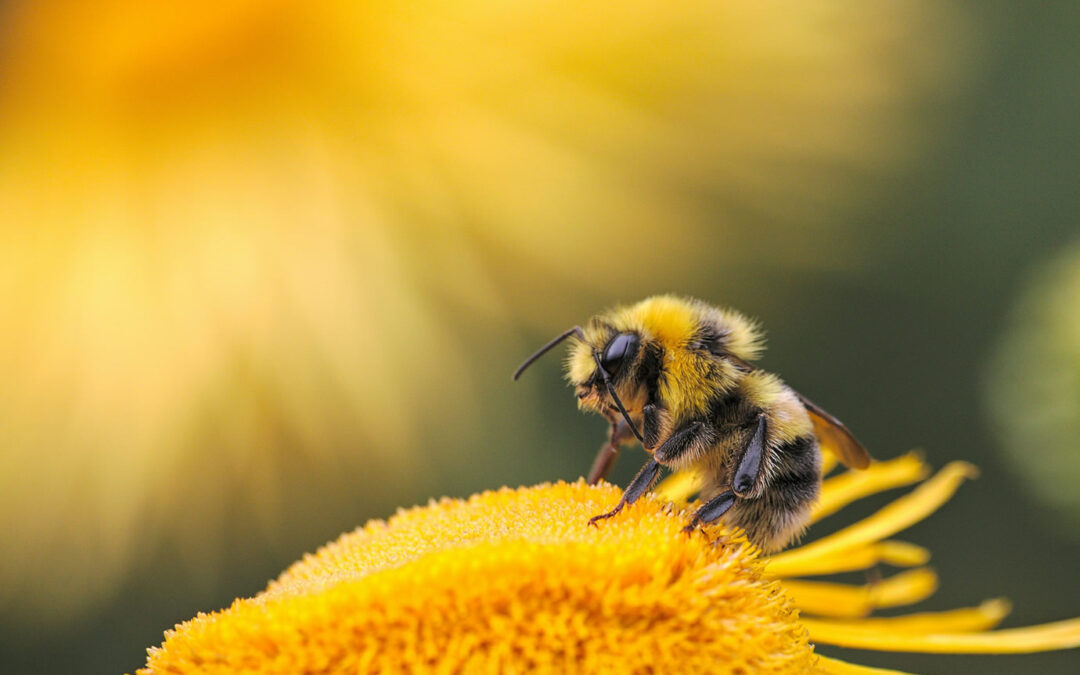Bees and other pollinator insects are critical in the ecosystem. These critters also help us produce the food we eat. However, bees are facing a concerning population decline due to various factors. At MowTown Blades, we recognize this dangerous situation. We aim to help lawn owners create havens for pollinators by planting bee-friendly plants, using natural fertilizers, and other tips. Read on and apply these practices to your yard or garden!
Bee Populations Are Declining
Since 2006, bee hives have been losing 30% of their population yearly. This collapse is happening at an alarming rate. Many scientists agree that the bee population decline stems from various environmental issues. Unfortunately, this trend will continue unless there’s a collective effort to preserve bee populations. Why is there a need to keep honeybees and other species alive?
Why We Need To Sustain Healthy Bee Populations
Bees and other insects are critical parts of our ecosystem. Keeping their populations at manageable levels helps with the following.
- Agriculture: The main reason why we need bees is their role in creating our food. These insects pollinate plants. Once pollinated, the flowers will produce fruit. Cereal crops, vegetables, and fruits all rely on bees. Without these insects, our food supply system will collapse. This can lead to mass starvation.
- Ecosystem Preservation: When plants aren’t able to reproduce with seeds, they can go extinct. Bees help preserve the delicate balance of an ecosystem by ensuring plants can bear seeds. Without plants as a primary energy source, the rest of the food chain could collapse.
- Effects on Industries Dependent on Plants: It’s not just agriculture that’s dependent on bee populations. Other industries that rely on plant byproducts — like clothing and medicine — will experience drastic effects if bees go extinct.
Ways To Make Your Garden More Friendly to Pollinators
Studies have shown that modern lawns have a major effect on bee populations. The lack of native plants and the use of pesticides create a harsh habitat that bees can’t live in. You can change this by following these best practices.
Avoid Artificial and Toxic Pesticides and Use Alternatives
Many artificial pesticides are harmful to bees. As these chemicals kill or drive away pests, the bees are also affected. Neonicotinoids, in particular, affect bees’ navigation and reproduction. This pesticide is one of the most harmful to insects. Instead of using these chemicals, you can opt for natural alternatives. Neem oil, diluted essential oils, and diatomaceous earth are generally okay for bees.
Native Trees and Shrubs Are Important
You can plant native plants in your garden. These trees and shrubs attract the local bee population. Best of all, these plants are low-maintenance since they’ve adapted to the local climate and environment. Bees can use the trunks and foliage as nesting sites or as places of rest.
Give Access to Water
A small water source makes your lawn more inviting to bees. They can make small stops and hydrate before visiting their next flower. Make sure to add a small fountain or bird bath. To prevent drowning, use pebbles and make the water shallow.
Ensure That There Are Flowers Continuously Blooming
Having plants constantly blooming is one way to ensure continuous bee visits. Choose shrubs and trees that can bloom throughout the growing season. Some examples are bee balm, lavender, and goldenrod.
Planting Ground Cover That’s Bee-Friendly
Instead of grass, you can opt for bee-friendly ground cover alternatives. Since these plants take up a large surface area, they provide much-needed support for bees and other pollinators. You’ll have a vibrant lawn that’s thriving with local insect species.
Some popular alternative ground covers are clover and creeping thyme. These plants bloom regularly, providing nectar sources for bees. In addition, these plants are more low-maintenance compared to grass.
Before choosing which alternative plant cover to use, do your research. Find plants that are native to the area. More importantly, the ground cover should produce flowers that attract bees and other pollinators. Moss, for example, is a great ground cover but doesn’t have bee-friendly flowers. On the other hand, wooly thyme and Roman chamomile create carpets of flowers that bees will love.
The Right Equipment for Bee-Friendly Ground Cover
Many alternative ground covers are relatively low maintenance. When they do need mowing, you’ll need to use the right equipment for the best results. Low-lift mower blades are generally the most ideal to use. These blades are gentle, making them less likely to damage delicate plants like clover or chamomile. When looking for high-quality low-lift mower blades, MowTown Blades has a wide selection. Browse our listings and find the products you need.
Wrapping Up: Making Your Lawn a Haven for Pollinators
Bees are critical parts of our ecosystem. We must be proactive in sustaining local bee populations to avoid the catastrophic effects of pollinator extinction. As a lawn owner, you can play your part by planting bee-friendly plants, using natural pest repellents, and other practices we outlined above.
FAQs
What Is the Role of Bees in Food Security?
Bees pollinate plants, allowing the latter to bear fruit. Many plants are dependent on bees and other insects to produce seeds, fruits, and other byproducts that humans use. Without bees, we could face dwindling yields that can’t adequately feed a population.
What Is the Best Bee-Friendly Ground Cover for My Lawn?
It depends on your location. Some thrive in certain climates while others are better suited for specific soil types. However, your main priority is to choose a ground cover that flowers. These plants are the ones that will attract the most bees.

